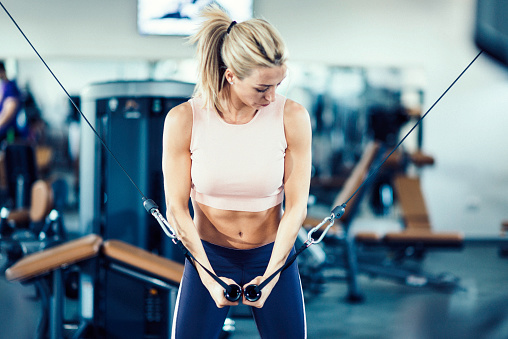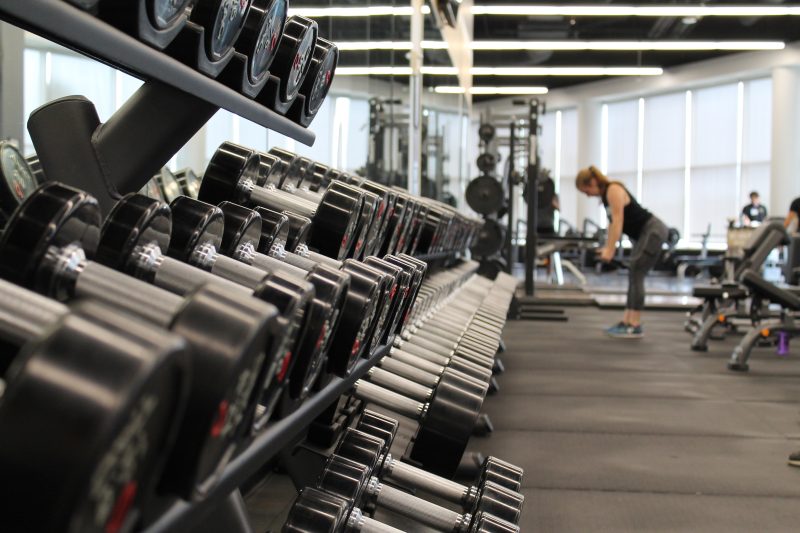Your glutes are the largest muscle in your body. If you want to build a strong, athletic, muscular, and shapely physique, you should use the most efficient isolation exercises possible. The cable kickback are one of the finest. This move will get your glutes through their full range of motion while avoiding interference from other muscle groups.
Table of Contents
What Are Cable Kickback?

A glute kickback is a muscle-building exercise that focuses on muscles in your lower body. Bodyweight, bands, machines, and of course, a cable machine may all be used to perform glute kickbacks. For the time being, let’s concentrate on the cable crossover machine.
A cable glute kickback is a fantastic glute exercise for isolating and focusing the resistance on the muscles of your gluteus maximus than squats. As a result, this cable exercise is one of the finest, and it’s really simple to do.
Another advantage of the cable machine is that it allows for quick adjustments in resistance, and there are many options to choose from.
You can focus on developing lower-body strength while also enhancing your flexibility and mobility by performing kickbacks. You’ll find a number of methods, choices, and cable glute kickback replacements to help you develop strength in your butt.
Whether you want to build muscle, enhance athletic performance, or just have a nice posterior glute kickbacks is the exercise to do it all. And what’s even better is that it doesn’t require much weight. All you have to do is pay attention to good form, execution, and total range of motion in order to get the most out of this workout.
Why Do You Use Cable Kickbacks?

Your glutes are not only beautiful, but they also have an important function. Your glutes assist you in maintaining your posture and balance, without which you would constantly fall forward when walking. The glutes are the largest and most powerful muscle in your body. Especially if you’re J-LO or a Kardashian… The glutes are connected at the tailbone or coccyx, as well as other bones surrounding it. It is responsible for moving your hips and thighs.
When your glutes become weak, it can lead to a variety of issues, many of which are listed below:
- Bad posture,
- Knee or hip discomfort that isn’t explained,
- Unstable standing on one leg,
- Lower back discomfort, and
- Heel discomfort and inflammation.
Glutes with poor strength reduce not only your physical performance but also your daily routine.
Benefits Cable Glute Kickback

Strength Gains
The cable glute kickback will help you build significant lower body strength. Your performance in the gym will benefit from stronger glutes. The cable glute kickback, for example, may be used as a great supplementary exercise to help people increase their maximum deadlift or squat.
Improved Posture
Bending too much can lead to a slew of problems, including lower back discomfort, hip misalignment, and headaches. Cable glute kickback exercises may help you improve your posture by realigning your hips.
Improved Balance
Your core, obliques, glutes and lower back all work to stabilize your body as your leg swings back behind you. This will assist in the improvement of your bodily control.
Eases Lower Back Pain
If your hips aren’t properly aligned or strong, you may have lower back pain. Cable kickbacks will relieve the tension in your back.
Glute Isolation
The cable glute kickback, as previously said, is an isolation exercise. This implies that while other activities such as the squat or deadlift target different muscle groups in your body, the cable glute kickback focuses specifically on your glutes. Isolation can be a significant benefit if your glutes are less powerful than your legs.
Mimics Actual Living Movement
Unlike other activities, this one improves your daily life rather than detracting from it. This exercise mimics movements that you perform on a daily basis, such as climbing stairs, standing for lengthy periods of time, or running, making these chores easier.
How To Perform Cable Glute Kickbacks

- Attach an ankle cuff to the cable end of the pulley. Set it on a single cable pulley machine at your ankle level. Now connect the pulley to an ankle cuff.
- Attach the ankle cuff to your left foot and stand in front of the machine with your body at a 45-degree angle. Grab hold of the machine frame for balance and bend at the waist until your torso is at around a 45-degree angle.
- Pivot from the hip, extending your left leg back and up as far as you can.
- Squeeze your glutes as hard as possible at the top position, then slowly descend under control to the starting position.
Cable Glute Kickbacks Common Mistakes
Using Your Lower Leg To Drive The Motion
Too frequently, I’ve seen weight lifters swing their leg back using momentum during the cable glute kickback. This may happen when people attempt to lift too much weight. In reality, this is robbing your glutes of potential gains.
Instead of driving the ankle attachment backward with your leg, concentrate on squeezing your glutes throughout the exercise motion.
Standing Up Straight
The cable glute kickback is another widespread error. Standing up straight restricts your range of motion, making it more difficult to work the glutes. Instead, hinge at the waist and bend over for a greater degree of movement!
Completing Partial Repetitions
Because they perform only partial reps, other lifters don’t finish them all with the cable glute kickback — they just stop there. The effectiveness of the glute kickback is directly related to the full range of motion – the farther you can extend your leg back, the more tension you’ll get in your butt.
Don’t be scared to cut weight if necessary, and concentrate on hitting every rep!
Cable Glute Kickback Variations
Glute Pushdown Machine
The glute pushdown machine is basically the same as a cable glute kickback, with one exception: the movement starts in your hips instead of your lower back. Engage your abs and contract your butt muscles to bring down and pull back the pad.
Squeeze your glutes and slowly return to the starting position. Repeat on the other leg!
Switches
The cable switch is a glute kickback exercise that focuses on the development of the gluteus medius and minimus. The position is identical to the standard cable glute kickback, with one exception: as you swing your leg back, turn your foot 90 degrees to the right or left.
Squeeze your glutes at the top of each rep and slowly return to the beginning position. Repeat with your opposite leg!
To know more about The Purpose Of A Leverage Squat Machine click here.







